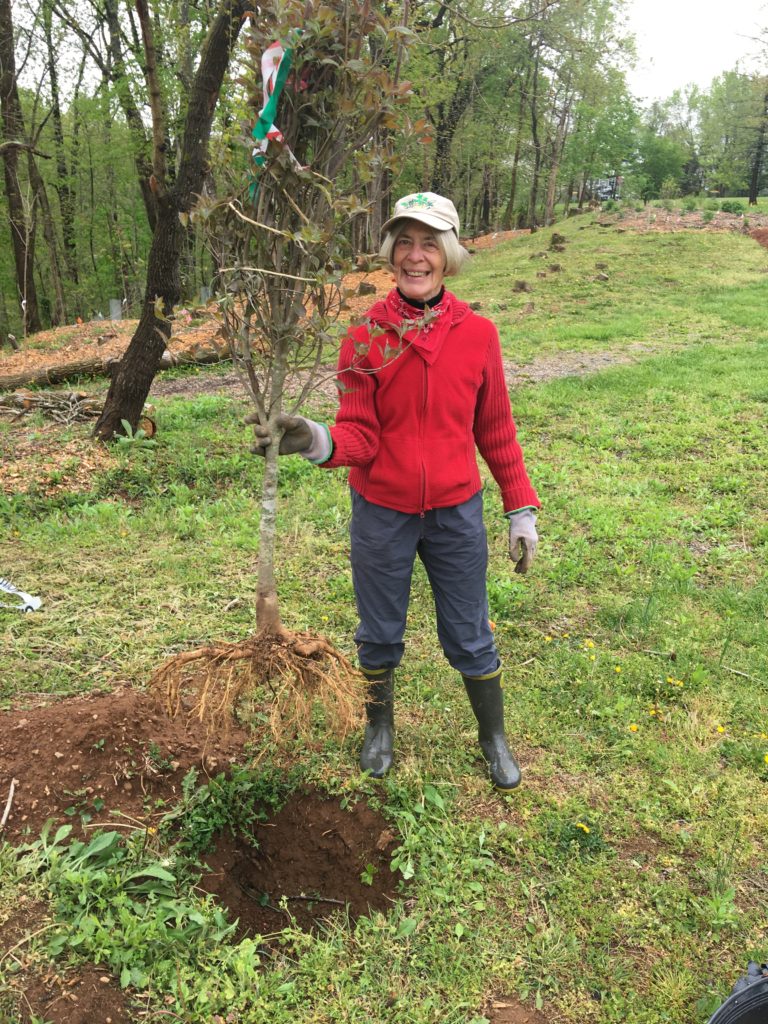Along the Rush River in the town of Washington, just a few miles east of the Shenandoah National Park, the 7.3-acre Rappahannock County Park is best known by locals for its pirate-ship playground, skate park, tennis courts, and picnic area. But, it has also come into focus recently for its natural beauty.
Native Plants & Pollinators
The more native plants in your landscape, the better it is for wildlife.
July at the Piedmont Memorial Overlook
The native flower meadow our Piedmont Memorial Overlook property is almost at peak bloom!
This 50-acre property, which has one of the best views in Northern Virginia, is publicly accessible via Sky Meadows State Park. It’s a one-way 1.6-mile hike there via the Ambassador Whitehouse Trail, but many people make it a 4.6-mile loop that includes a stretch of the Appalachian Trail.
President’s Letter – Spring 2020
Rumor has it, the idea for Earth Day was first announced at the Airlie Conference Center in Fauquier County, spurring a national and international movement to make the environment a major focus. That was 1969, and today, 50 years later, much progress has been made on those initial concerns about air and water pollution, loss of wildlife and endangered species. But, as we are reminded daily, that progress has been offset by population growth and consumption around the world. Arguably, we are overwhelming the earth’s natural systems at a global scale.
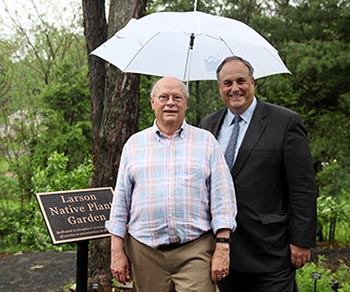
Larson Native Plant Garden Opening
With umbrellas in hand, attendees of the Larson Native Plant Garden Reception ventured out to admire the well-designed landscape around PEC’s headquarters office in Warrenton, Va. Named in honor of the organization’s former vice president, Doug Larson, the visionary of the project, the garden has 118 species of native perennials, woodies and grasses.
“It’s already proving to be an educational tool,” says Doug. “People in our beautiful front yard were reading the names of the plants and really taking it all in; and that’s just folks walking down the street. I think it’s going to show people in Warrenton what they can do with native plants.”
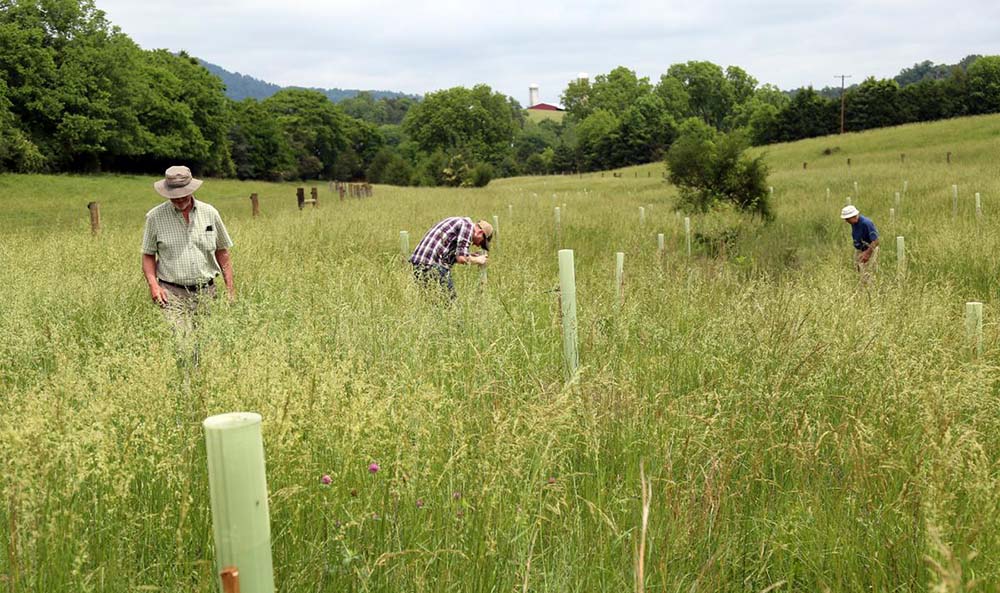
A Legacy of Love
Through the Headwaters Stream Initiative, an astounding 3,765 trees were planted on 16 acres the Goodall property in Madison County, including 4,600 linear feet of stream.
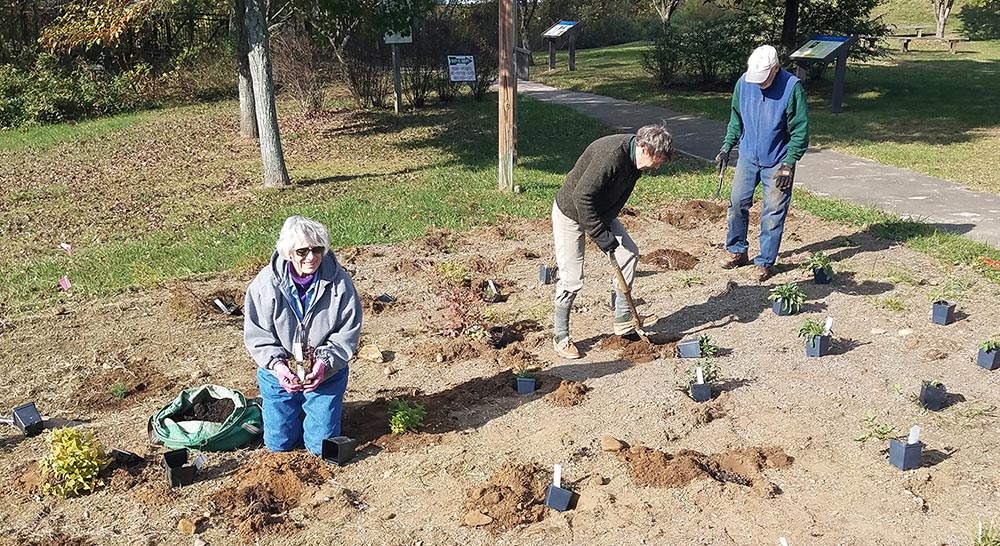
Pollinator Garden Planted by Thornton River
PEC partnered with the Endangered Species Coalition (ESC), Cliff Miller Jr. and RappFLOW to install a pollinator garden next to a walking trail by the Thornton River in Sperryville, Va. Using native plants such as perennials, grasses and shrubs from Hill House Farm and Nursery, the garden was installed during a volunteer planting event this past fall.
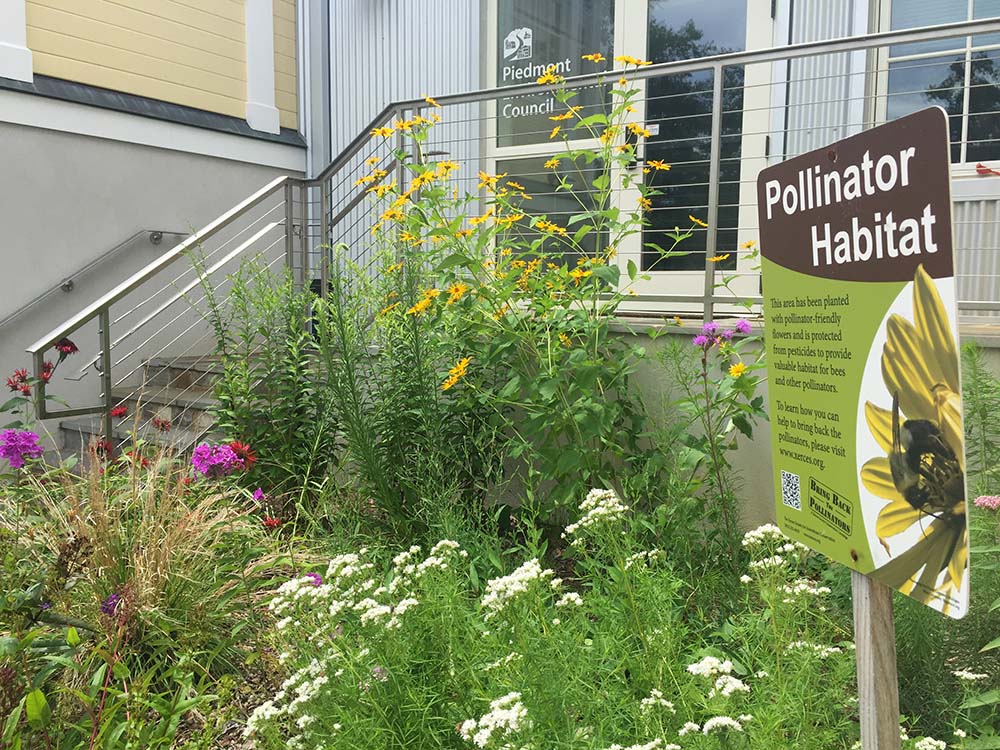
A Buzz Worthy Home
You don’t have to be a genuine bee keeper to help our native bees. You can create a place for them to thrive right in your backyard garden. First, assess your location. Is your project area in full sun, partial sun or is it fully shaded? Soil drainage also matters, whether it’s average, dry or wet soil. Once you know this, pick the plants that would thrive in that specific environment.
Choosing native plants is best for native bees, as they have adapted to each other over time. You can visit the Virginia Plant Atlas at vaplantatlas.org to see a selection of native species or review PEC’s “Go Native Go Local” guide at pecva.org/gonative to find retailers selling natives.
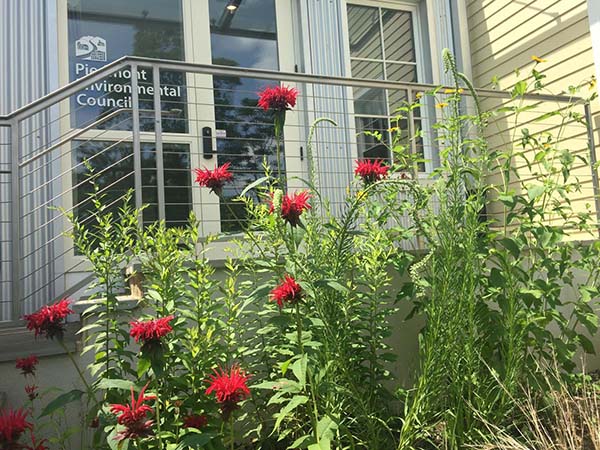
Planting by Example
If you happen to walk by our office in Old Town Warrenton, you may notice some changes around the building — a little more green, some dashes of color and new trees to boot. And along with it being aesthetically pleasing, it is sustainable.
It has been a year and a half since we finished the renovation of our headquarters office. Soon after we moved back in and unpacked, planning for the restoration of the grounds began.
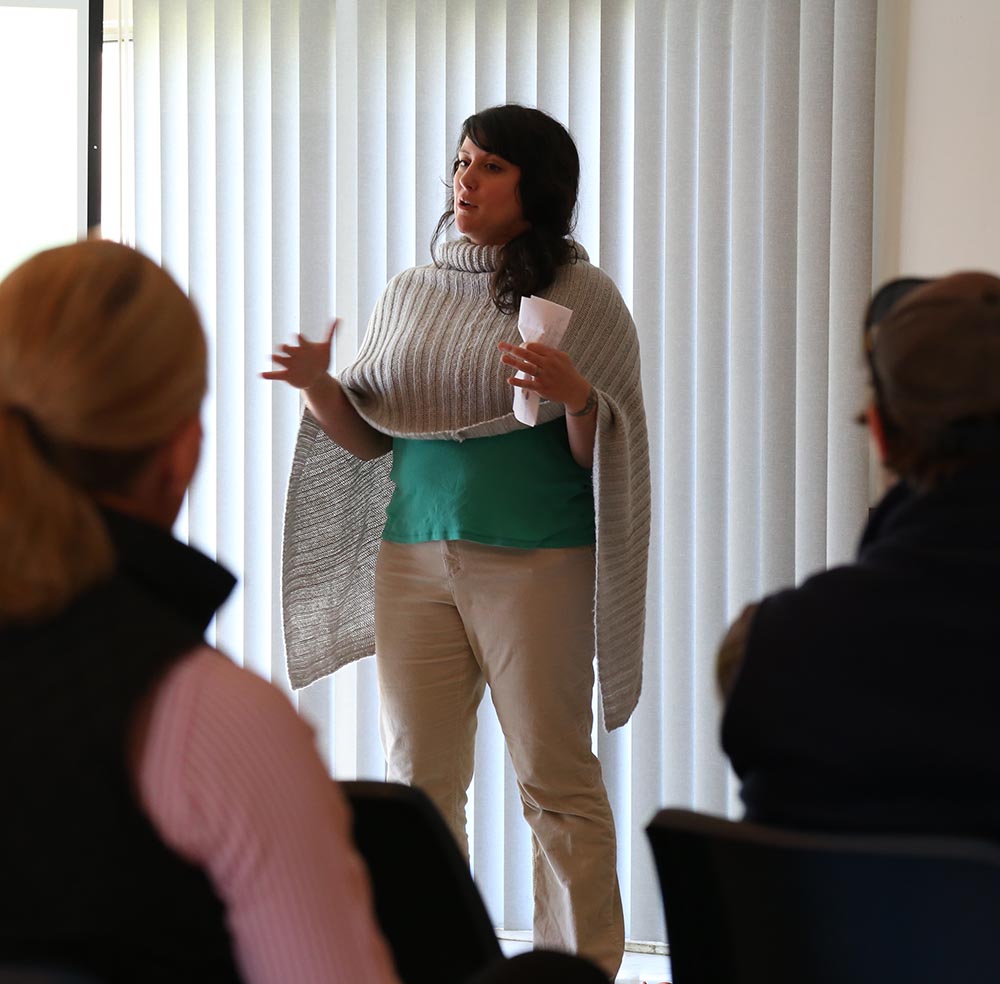
Protecting Thumb Run
What’s good for wildlife is often good for water quality,” said Celia Vuocolo, PEC’s wildlife habitat and stewardship specialist, as she spoke to guests at the fifth Annual Thumb Run Open House.
This sentiment was reinforced at the event, held on November 13 at the Orlean Fire Hall, by speakers Amy Johnson of Smithsonian Conservation Biology Institute’s Virginia Working Landscapes Program, Janet Davis of Hill House Farm and Nursery and Dr. Tania Cubitt of Performance Horse Nutrition LLC, whose presentations focused on grassland bird conservation, landscaping for wildlife and healthy horse pastures, respectively. While the presentation topics varied, the underlying theme was the same — land stewardship supports clean water.
Grasslands & Meadows
Converting areas of turf and lawn into native warm season grasslands increases the vertical structure and species diversity necessary to feed and provide cover for grassland birds such as bobwhite quail, grasshopper sparrows, meadowlarks, and loggerhead shrikes. Typical warm-season grass species include switchgrass, indiangrass, little and big bluestem, which can be mixed into a beautiful wildflower meadow filled with black-eyed Susans, partridge pea, purple coneflower, butterfly milkweed, and New England Asters.


